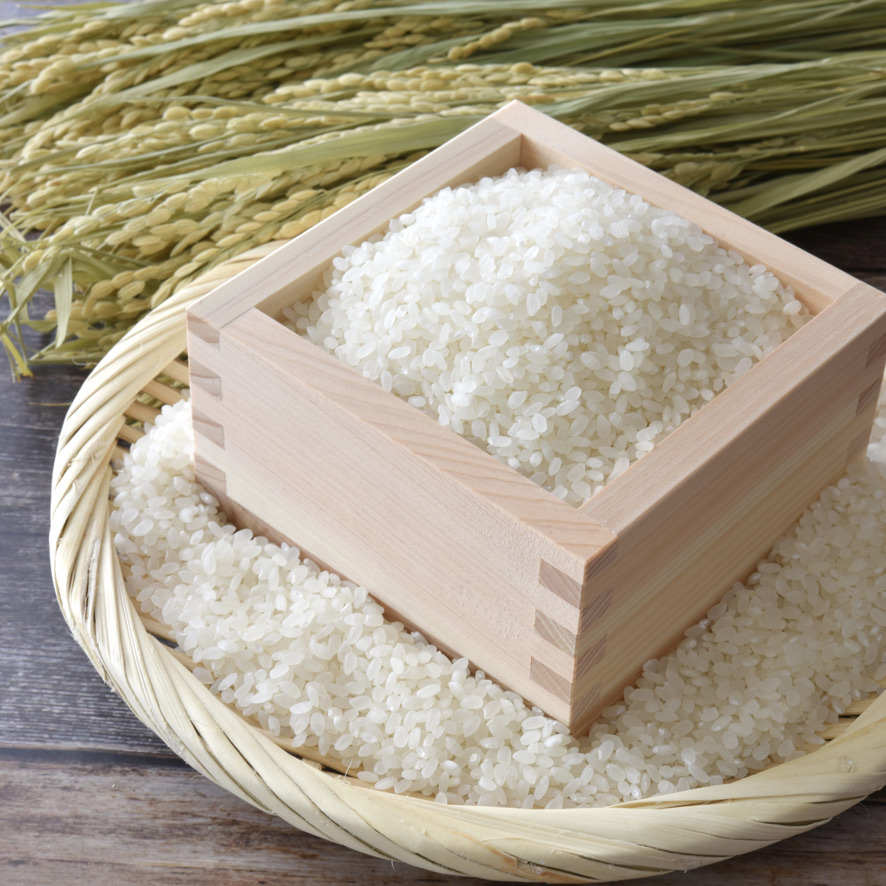【 Rice in Japan 】
Rice that we(Japanese people) eat every day. More than 300 types of rice are produced in Japan alone. I don’t think there are many people who can tell the type of rice by its appearance and taste, but there are actually differences such as sweetness and stickiness. So, let’s explain the knowledge and varieties of rice, how to eat it deliciously, etc.
○The history of rice
Rice is very familiar to us Japanese, but its origin goes back to the Jomon period. About 2,000 years have passed since the beginning of the Christian era, but it is surprising that it is clear that rice was produced in Japan at least 3,000 years ago. The climate with distinct seasons of heavy rainfall and low rainfall is said to be suitable for growing rice. Therefore, in Japan, which has such a climate, it may be said it is natural that rice has taken root in our diet as a staple food.
○Brand rice that represents Japan
Various types of rice are produced in Japan, but among them, rice called brand rice is especially special to us Japanese. Speaking of famous brand rice in Japan, it would be “Koshihikari”. It is produced in a wide area of Japan, and boasts the number one production volume of domestic branded rice. In addition, there are many other brands of rice that are produced in accordance with the climate and topography of each region in Japan. New varieties have emerged in recent years.
○Differences between overseas rice and Japanese rice
I mentioned that there are more than 300 varieties of rice grown in Japan, but of course rice is grown in various countries other than Japan, and there are many varieties of rice grown in the world. As a result, the number exceeds 1,000. The rice cultivated in Japan is collectively called “Japonica rice”, and its characteristics are rounded oval, sticky and sweet, just like the rice we eat every day in Japan.
In addition to japonica rice, there are also “indica rice” mainly produced in India, Thailand, China and the United States, and “Javanica rice” grown in Southeast Asia such as Indonesia, Italy and Spain. Indica rice has an elongated shape and is less sticky than Japanese rice, and Javanica rice can be said to be between Japonica rice and Indica rice in terms of both shape and stickiness.
○Clay pot is the most delicious way to cook rice
It is said by heating the whole clay pot gradually over low heat, the action of amylase, which brings out the sweetness of the rice, becomes active, so it is best to heat the rice slowly. Even after removing the pot from the heat, the rice is steamed to evaporate the excess water, making it fluffy and delicious. It is said that a clay pot with high heat retention is suitable for this part.
【日本のお米】
我々が毎日のように食べているお米。一言でお米と言っても、日本国内だけで300種類以上も生産されている。お米の見た目や味でお米の種類を言い当てるなんて人もそうそういないと思うが、甘味や粘りなどの違いが実際にはあるものだ。そこで、そんなお米の知識や品種、美味しく食べる方法などを解説していこう。
○お米の歴史
我々日本人にとって、とても身近な存在のお米だが、その起源はなんと縄文時代までさかのぼる。西暦に入って約2000年経つが、日本ではお米は少なくとも3000年以上前から作られていたということが明らかになっているというから驚きだ。雨が多く降る季節と雨が少ない季節がはっきりとしている気候が、お米作りには適しているとされている。そのため、そういった気候を持つ日本で、お米が主食として我々の食生活に根付いていったのは、自然なことだと言えるのかもしれない。
○日本を代表するブランド米
日本ではさまざまな種類のお米が作られているが、そんな中でもブランド米と呼ばれるお米は特にわれわれ日本人にとっては特別な存在だ。日本のお米で有名なブランド米と言えば、やはり「コシヒカリ」だろう。日本の広い地域で生産されており、国内のブランド米の生産量もナンバーワンを誇っている。また、その他にも日本の各地域の気候や風土に合わせたブランド米が数多く生産されており、東北地方であれば「ひとめぼれ」や「あきたこまち」、西日本であれば「ヒノヒカリ」などと、さまざまな品種が近年でも生まれてきている。
○海外の米と日本米の違い
日本で栽培されているお米の品種は、300種類以上にも及ぶという話はしたが、当然日本以外のさまざまな国でもお米は栽培されており、世界で栽培されているお米の品種となると、その数は1000種類を超える。日本で栽培されているお米は、総称で「ジャポニカ米」と呼ばれており、その特徴は丸みを帯びた楕円形、粘りと甘味が強く、まさに我々が毎日食べているお米だ。
ジャポニカ米以外には、主にインドやタイ、中国やアメリカなどで生産されている「インディカ米」、インドネシアなどの東南アジア、イタリアやスペインなどで栽培されている「ジャバニカ米」などがある。インディカ米は、日本のお米と比べると、細長い形状で粘り気が少なく、ジャバニカ米は形、粘り気ともに、ジャポニカ米とインディカ米の中間と言えるだろう。
○ご飯が一番美味しく炊けるのは土鍋
弱火で土鍋全体を少しずつ温めることで、お米の甘みを引き出す「アミラーゼ」の働きが活発になるため、ゆっくりと加熱していくのがよいと言われているのだ。鍋を火からおろした後も、お米を蒸らすことで余分な水分を飛ばし、ふっくらと美味しく炊き上げることができる。この部分も高い保温性を持つ土鍋が適していると言われているのだ。

